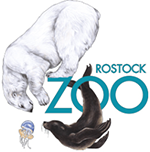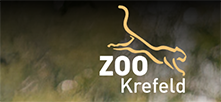Bennett’s Tree Kangaroo
Family: Macropodidae
Genus: Dendrolagus
Species: bennettianus
Characteristics: They have a black chest, stomach and underside of tail. The back, legs and arms are usually brown and grey. The colour pattern of this species is the reverse to the normal colour pattern for mammals which may help camouflage the animal from below.
Males: 13 kg (Average weight)
Females: 10 kg (Average weight)
Distribution: Montane and dry lowland rainforest of far north Queensland, Australia.
Elevation: sea level – 1,400 meters above sea level.
Diet: Epiphytic ferns and leaves.
Reproduction: The rate of reproduction is slow. Young Bennett’s Tree Kangaroos spend about eight months in their mother’s pouch and then stay close to mum for around two years. Sexual maturity is possibly at two years of age for females but is unknown for males.
Conservation Status: Near threatened (IUCN)
Habits:
Bennett’s Tree Kangaroo lives in montane and dry lowland rainforest of far north Queensland, Australia. It can be found from elevations close to sea-level to approximately 1350m. Despite being able to survive in different habitats its geographic range is very small, perhaps less than 2000 square kilometres.
Bennett’s Tree Kangaroo is a large species with adult males, which are larger than females, reaching almost 14 kilograms in weight.
Bennett’s Tree Kangaroos have a black chest, stomach and underside of tail. The back, legs and arms are usually brown and grey. The colour pattern of this species is the reverse to the normal colour pattern for mammals. This could be an adaptation to avoid detection from predators. This colour reversal may camouflage the animal from below.
Males of the species defend large territories which can overlap the territories of two or three females. The territories of females do not overlap with other females and are smaller than the territories of males.
As is the way with Tree Kangaroos, the rate of reproduction is slow. Young Bennett’s Tree Kangaroos spend about eight months in their mother’s pouch and then stay close to mum for around two years. Sexual maturity is possibly at two years of age for females but is unknown for males.
Conservation Status:
Hunting from Aborigines restricted the population and distribution of the Bennett’s Tree Kangaroo. Now this hunting is no longer and so its distribution and probably population has increased. Although only found within a small area it is protected in the world heritage area but the quality of its habitat is declining and is classified as near threatened.
References:
Mammals of new Guinea – Tim Flannery (1995)
Tree Kangaroos – a curious natural history – Tim Flannery, Roger Martin and Alexandra Szalay (1996).
Illustrations Peter Schouten.
http://www.iucnredlist.org/details/6426/0

Bennetts Tree Kangaroo
(Dendrolagus bennettianus)
Illustration – Peter Schouten

Distribution of Bennetts Tree Kangaroo
References: Mammals of new Guinea – Tim Flannery (1995) and Tree Kangaroos – a curious natural history – Tim Flannery, Roger Martin and Alexandra Szalay (1996). Illustrations Peter Schouten. http://www.iucnredlist.org/details/6435/0
Subscribe to our mailing list
There are many valuable ways in which you can contribute to the Tenkile Conservation Alliance’s vision – which is, the people of PNG value and protect their natural resources, their community and their culture.
Click 'Contribute' button above to learn more.
Subscribe to our mailing list
There are many valuable ways in which you can contribute to the Tenkile Conservation Alliance’s vision – which is, the people of PNG value and protect their natural resources, their community and their culture.
Click 'Contribute' button below to learn more.
















